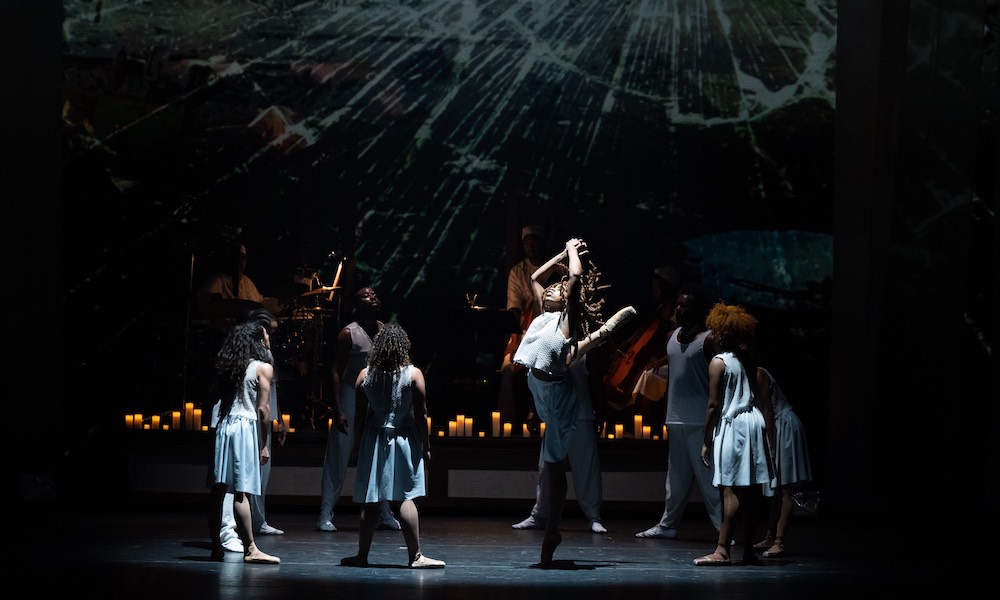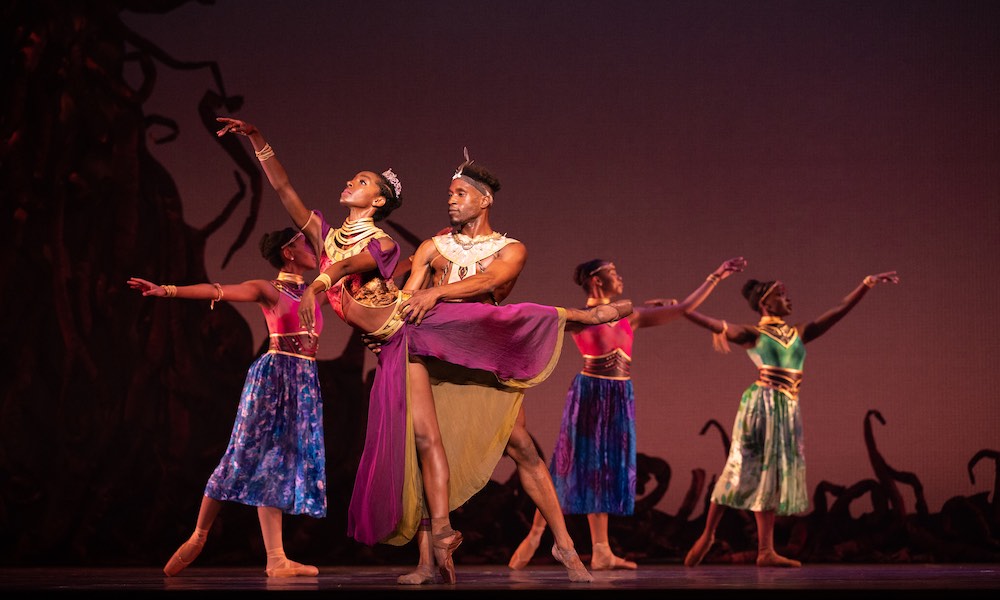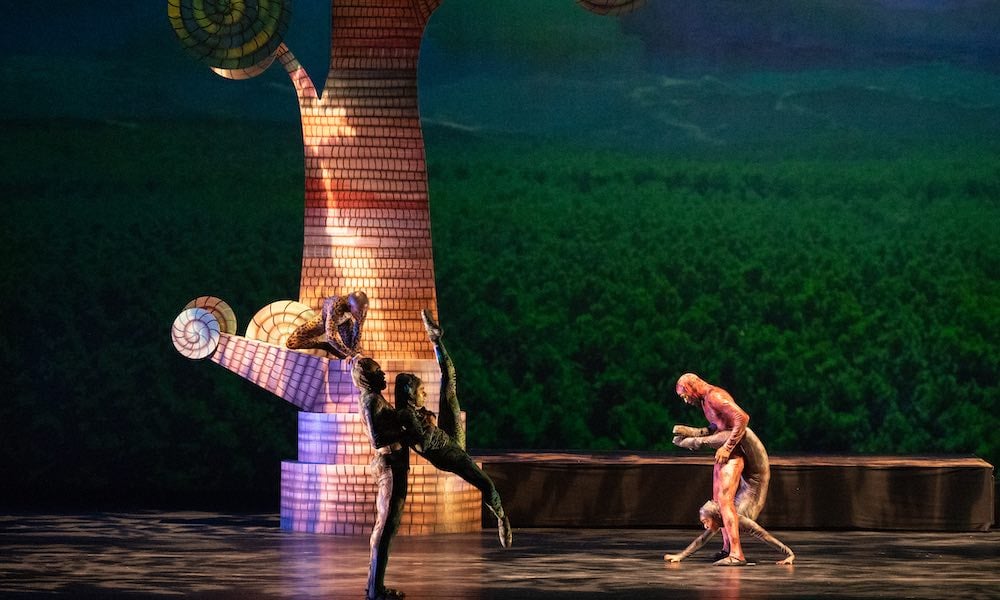Ballet has had a white supremacy problem since the earliest steps were codified in the court of Louis XIV. Once a way to broadcast power, wealth, and proximity to the French king, over the years, the dances once practiced and performed by courtiers evolved into a professionalized artform that emulated the strictures and hierarchical structures of the European court system. More than four centuries later, ballet remains an elite and, in many cases, predominantly white artform.
Predominantly Black ballet companies have been few over the past century — among them was one homegrown right here in Washington, the Capitol Ballet Company, founded by the formidable Doris Jones and Claire Haywood of the Jones-Haywood School of dance, which still teaches new generations of primarily African American ballet students in its Georgia Avenue NW studio. On the heels of Rev. Dr. Martin Luther King’s assassination, a New York City Ballet star and George Balanchine’s first Black male principal dancer named Arthur Mitchell founded the now-venerable Dance Theatre of Harlem, today directed by native Washingtonian and former DTH ballerina Virginia Johnson.

But Black ballet dancers are not unicorns. And that was exactly what two mixed-bill ballet programs in the Kennedy Center’s Opera House, plus additional panels, master classes, and ancillary events comprising Reframing the Narrative, intended to demonstrate. The opening night performance began with a narrator invoking the spirit of Sankofa, from Ghana’s Twi language, meaning to look back while moving forward, as a way to honor past “unicorns” — Black ballet dancers whose successes have not always been recognized and lauded in equal measure as their white counterparts’.
Following, a simple screen featured a roll call of dancers collected by a one-time Dance Theatre of Harlem dancer, Theresa Ruth Howard’s Memoirs of Blacks in Ballet, an archival project to gather the evidence that Black bodies matter in ballet and must be neither ignored nor forgotten. The scrolling list of 624 names on opening night, just four nights later on Friday, June 17, had grown to 650 names.
Reframing the Narrative is meant to illuminate Black excellence in the ballet world, co-curator Denise Saunders Thompson, president and CEO of the International Association of Black in Dance, stated in an address to the audience during the program. She was joined on stage by co-curator Howard, who worked on a Kennedy Center–commissioned work meant to showcase Black ballet voices from the selected choreographers to the dancers who were invited from high-level ballet companies from around the world to participate. Howard then offered the audience a question to ponder in this historic coming-of-age moment for the ballet world: “What does reframing mean for you?” She noted that it is set forth as both a provocation and invitation, but it is also intentionally a gift “to ourselves and to you,” the audience.

The two distinct programs featured three ballet companies that center Black and Brown dancers, choreographers, and artistic directors — Dance Theatre of Harlem, Atlanta’s Ballethnic Dance Company, and Memphis’s Collage Dance Collective, along with the world premiere commission by Seattle’s Donald Byrd featuring 11 dancers.
“From Other Suns” was created by Byrd during a two-week Kennedy Center residency at the REACH this month. Based on Isabel Wilkerson’s 2010 account of the Great Migration, The Warmth of Other Suns, when Black Americans moved from the South up North, to the Midwest and the West starting in the early 20th century. This migratory shift changed the nation. In “From Other Suns,” set to a score by Kennedy Center resident composer Carlos Simon, the work is a meditation on movement, from the opening when a single man walks on stage to the evolving groups, trios, and pairs that interweave dancers in linked chains, swirling vortexes, and, ultimately, a line traveling single file across the diagonal and off stage. Byrd, a modern dance choreographer, has an affinity for the clear precision and lines of ballet, but he is not wedded to classicism. Rather he draws on ballet’s codified vocabulary yet makes it his own, allowing dancers freedom in their torsos, hips, and arms before they reconnect with their centers. In intricate coupled moments, pretzel-like lifts support women in difficult balances, while dancers find the floor, even flat on their backs, their point up in the air.
If Byrd has a narrative for “From Other Suns,” it is not evident or necessary. Instead, the evolving structure of groups moving en masse, or individuals or couples breaking away, lends a migratory sensibility to the piece, and, with Pamela Hobson’s saturated, shadowy lights and the black practice wear of leotard and tights for costumes, the work resonates with a somber tone. In a nod to mid-20th-century neoclassicism, a few Balanchinisms glimmer forth, but in no way make a statement or pay homage to America’s most prominent ballet choreographer. Instead, these glimpses are simply an acknowledgment that this 21st-century American ballet draws from many roots; others include simple vernacular and pedestrian moments tucked into and between multiple pirouettes or splicing split leaps.
With DTH’s long history as a regular visitor to the Kennedy Center, particularly in the 1980s and ’90s, and later offering yearly pre-professional summer ballet training for aspiring dancers, the Reframing week opened with the company’s “Balamouk,” a bright, jazzy and folkish romp by Belgian-born, Amsterdam-based Annabelle Lopez Ochoa, which allowed the company to display its personality and aplomb. The troupe, known for its classical and neoclassical chops, also shared the “Odalisques” variation for the classical work Le Corsaire, a study in sturdy balances, turns, and pointe work performed by Amanda Smith, Alexandra Hutchison, and Ingrid Silva.

Opening the second program on Friday night, DTH gave a nod to its lineage with resident choreographer Robert Garland’s “Gloria,” featuring Francis Poulenc’s setting of part of the Catholic mass. The curtain opened to reveal a septet of girls, smiling and displaying their youthful port de bra — coordination of the arms. Garland draws frequently from street and club dances, facilely rebranding them into the ballet vernacular. “Gloria” hints at that on occasion, with quirky elbows and folksy grapevine steps, but the piece emulates both a bright reverence and a spiritual force, particularly when one woman is borne overhead in a cross position.
On Tuesday’s opening-night program, Ballethnic Dance Company also brought a spiritually based work. “Sanctity,” choreographed by company co-director Waverly Lucas, with a live percussion and jazz score by L. Gerard Reid, draws on African roots evident in the score and in the physicality. Each dancer contributed both poetic statements, which were voiced over (although hard to hear over the live drumming), and talisman-like objects. These were carried on and placed at an altar-like structure while the performers, clad in white, danced. The cultural connections to root African forms and structures remained evident even with the balletically based point work in the foreground. On Friday, the company brought excerpts from its full-length “The Leopard Tale,” an entertaining and imaginative trip to the African jungle and plain featuring undulating snake-like creatures, and a playful and predatory pair of leopards. This audience pleaser featured plenty of splits, high kicks, and acrobatic tricks along the adventure.
Muddy Waters, B.B. King, Koko Taylor, and Bobby “Blue” Bland got the Collage Dance Collective artists in a bluesy mood. To the tremor and twang of slide guitar, “Bluff City Blues,” a jazzy and hip take on the blues, features its earthy moments from choreographer Amy Hall Garner, but sometimes even with the fan kicks, hip switches, and rolls, it gets a bit staid, and the men’s blue polo shirts don’t feel quite right. But the company does a great job at getting the audience to clap along — a feat in a ballet-focused program.

Collage topped off the Friday evening program with its new production of “Firebird,” featuring the famed Igor Stravinsky score. The Canadian-trained founding artistic director Kevin Thomas choreographed this fairy tale of a prince — Ricky Flagg II on Friday — seeking his soulmate who runs into an enchanted firebird — Chrystyn Fentroy — in the forest who gifts him with a magical feather. The cast is rounded out by Precious Adams of English National Ballet as the Princess of Unreal Beauty and various wizards, maidens, and monsters. The colorful ballet had scenery by Alexander Woodward and costumes by Gabriela Moros Diaz. Originally a 1910 Ballet Russes piece, this 2021 version retains the ballet’s plot and vision and reflects a contemporary attitude in the performances.
Reframing the Narrative’s co-curator Denise Saunders Thompson shared with the audience that in visioning these programs she wanted to create a “blackout.” In high-school pep rally parlance, that means one team’s fans wear all black to a nighttime game. But here, at the Kennedy Center Opera House and rehearsal studios for a fortnight in June, this blackout was far more significant. Representation on stage was a given, but Thompson went further, ensuring the orchestra conductors, stage managers, lighting designers, and others working behind the scenes were also Black or Brown-identifying artists. Ballet for centuries has been a white artform, from its tutus and tights to its choreographers and dancers. Reframing the Narrative is another step in forging a path forward toward a more equitable and representative art form for all people.
Running Time: Two hours 20 minutes, including two 15-minute intermissions.
Reframing the Narrative played June 14 through 19, 2022, at the John F. Kennedy Center for the Performing Arts Opera House, 2700 F Street NW, Washington, DC.
The program for Reframing the Narrative is online here.
COVID Safety: Masks are required for all patrons inside all theaters during performances at the Kennedy Center unless actively eating or drinking. See Kennedy Center’s complete COVID Safety Plan here.




